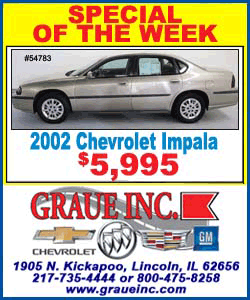|
 Many Wall Street analysts believe Pfizer will decide to split late
next year, after compiling three years of financial data treating
its "established products" division, which sells generic medicines,
and its "innovative" patent-protected medicines unit, as if they
were separate companies. Many Wall Street analysts believe Pfizer will decide to split late
next year, after compiling three years of financial data treating
its "established products" division, which sells generic medicines,
and its "innovative" patent-protected medicines unit, as if they
were separate companies.
Such a split would dramatically boost the company's profitability,
because in-patents drugs command much higher prices that rise every
year, as opposed to off-patent medicines, that become commoditized
and their prices decline.
"This would be the creation of two companies really, not one huge
$350 billion Pfizer," Andy Summers, co-portfolio manager at Janus
Capital Group, said of the likely Pfizer split post merger. Janus is
the 11th largest Allergan shareholder with about 6.5 million shares,
according to Thomson Reuters data.

Pfizer's $15 billion purchase earlier this year of hospital products
maker Hospira, which sells generic injectable drugs and is
developing biosimilar versions of top-selling biotech medicines, was
widely seen as a move to make the established products business more
attractive ahead of a sale.
A combination with Allergan would add lucrative product lines to
Pfizer's core innovative business, including aesthetics such as
anti-wrinkle treatment Botox and facial fillers, and opthalmology
and neurology brands.
At a business review on Wednesday, Allergan highlighted some of its
more promising new medicines, including Viberzi for irritable bowel
syndrome, which the company believes will be a $1 billion drug.
Allergan could also contribute somewhat to established products as
well, notably the Alzheimer's treatment Namenda, which was not
included in the $40.5 billion agreement to sell Allergan's huge
portfolio of generic drugs to Teva Pharmaceutical Industries. The
deal is expected to close early next year.
Oliver Pursche, chief executive of Bruderman Asset Management, which
holds Pfizer shares in client portfolios, said a combination with
Allergan "certainly gives Pfizer more flexibility in terms of how it
wants to execute that strategy" of splitting the company.
"It makes it more of a growth company."
[to top of second column] |

VACCINES A GROWTH DRIVER
Pfizer has annual sales of about $48 billion, with about $27 billion
from patent-protected drugs, vaccines and consumer products. It gets
about $21 billion from the established products, which consist of
older medicines that now face competition from cheap generics,
including the cholesterol fighter Lipitor, once the world's
top-selling prescription medicine.
Allergan, which was created in its current form in March following
its merger with Actavis, expects revenue of more than $8 billion in
the second half of 2015, not including the generic drugs it is
selling to Teva.
"All of Brent's growth areas at Allergan would stay at the growth
company," said Janus's Summers, referring to Allergan CEO Brent
Saunders.
Revenue from Pfizer's established products fell 9 percent in 2014,
creating a drag on overall growth. That has only worsened this year
with the impact of the strong dollar on overseas sales. The unit's
sales were down 16 percent in the third quarter.
In contrast, businesses Pfizer would keep were up 13 percent for the
quarter, with vaccines the biggest growth driver led by its current
top seller, Prevnar 13, used to prevent pneumonia.
[© 2015 Thomson Reuters. All rights
reserved.] Copyright 2015 Reuters. All rights reserved. This material may not be published,
broadcast, rewritten or redistributed.
 |